Young Chabelita must stay with her grandparents while her mother lives in a distant town. When Chabelita recites her mother’s favorite poem at her school’s Christmas pageant, she receives a special Christmas surprise. Argentina Palacios is a noted folklorist and Latin American storyteller. Full color.
Christmas
Merry Navidad!: Christmas Carols in Spanish and English/Villancicos en español e inglés
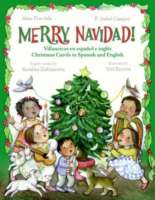
Resuenen con alegría los cánticos de mi tierra que viva el Niño Jesús que ha nacido en Nochebuena. It’s time to sing out with joy the songs that are sung in my land in praise of the precious Child born this holy Christmas evening. Come share the joy of a Hispanic Christmas! In this warm and vibrant collection of traditional Spanish Christmas carols, or villancicos, noted authors Alma Flor Ada and F. Isabel Campoy bring to life the holiday traditions of Latin America and Spain. The creative English adaptations by Rosalma Zubizarreta both capture the spirit of the originals and add a new dimension to the songs. And Spanish illustrator Viví Escrivá’s spirited illustrations are perfect backdrops for the lyrics, adding rich holiday flavor. Come sing along! ¡Feliz Navidad! and Merry Christmas!
Leyenda De La Flor Nochebuena, La: The Legend Of The Poinsettia
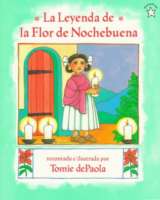
When Lucida is unable to finish her gift for the Baby Jesus in time for the Christmas procession, a miracle enables her to offer the beautiful flower we now call the poinsettia.
La Nochebuena South Of The Border
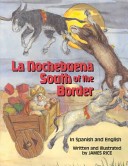
In this bilingual version of “The Night before Christmas,” Santa has become Papa Noel and his reindeer have been replaced with eight burros pulling a cart.
Three Kings Day: A Celebration At Christmastime
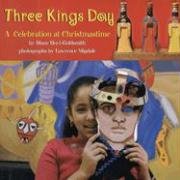
For many Latino Americans one of the best things about Christmas is that it lasts for twelve days. The final day, Three Kings Day, comes on January 6 and honours the arrival of the Magi in Bethlehem. It’s a favourite holiday for children, with presents from the kings as well as parades, performances, parties, lively music, and scrumptious food. While describing the customs and revelry ten-year-old Veronica shares with her family and New York City’s Puerto Rican community, this book portrays a celebration that is rich in tradition and artistry. A glossary and index are included.
La Fiesta De Melchor / Melchor’s Celebration (Nueve Pececitos, Raices / Nine Small Fishes, Roots) (Raices)
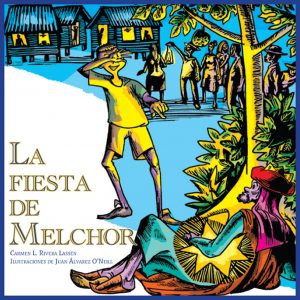 Melchor, el rey custodio de la estrella de Belen, se queda dormido bajo un arbol despues de dejar regalos y haberse comido lo que le dejaron de obsequio en las casas de Puerto Rico. El cielo se queda a oscuras sin la estrella de Belen y comienza entonces la busqueda de Melchor. El niño Carmelo lo encuentra bajo el arbol y todos celebran que aparecio. Desde entonces se hace una celebracion para el Rey Melchor en los dias que siguen al día de Reyes.
Melchor, el rey custodio de la estrella de Belen, se queda dormido bajo un arbol despues de dejar regalos y haberse comido lo que le dejaron de obsequio en las casas de Puerto Rico. El cielo se queda a oscuras sin la estrella de Belen y comienza entonces la busqueda de Melchor. El niño Carmelo lo encuentra bajo el arbol y todos celebran que aparecio. Desde entonces se hace una celebracion para el Rey Melchor en los dias que siguen al día de Reyes.
The Polar Express
The Santero’s Miracle: A Bilingual Story
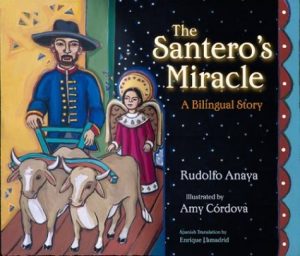 In this bilingual story of faith, Don Jacobo has a dream that, in the end, is a reminder that miracles do happen. Jacobo is teaching his visiting grandson Andrés how to become a santero. Christmas is coming, snow is falling in the village, and the two are working on a carving of San Isidro, the patron saint of farmers. The half-finished carving stands in the living room beside the two oxen and the angel that don Jacobo carved earlier in the month. The snow-covered mountains are beautiful, but the road to the village is impassable. Andrés’s parents will not be able to get to the house for the holiday, and Jacobo’s neighbor Leopoldo is desperately ill but cannot get to the hospital. Then comes Jacobo’s dream; San Isidro is plowing with the two oxen and the angel is helping. \”But we don’t plow ’til April\” don Jacobo muses upon awakening. \”What does it mean?\” The night had been bitterly cold and don Jacobo must bundle up to go to the barn to feed his cows and chickens. As he steps outside, he can hardly believe his eyes. The snow-packed road is clear. Rudolfo Anaya’s story of the power of faith, hope, and love will be enjoyed by readers of all ages.
In this bilingual story of faith, Don Jacobo has a dream that, in the end, is a reminder that miracles do happen. Jacobo is teaching his visiting grandson Andrés how to become a santero. Christmas is coming, snow is falling in the village, and the two are working on a carving of San Isidro, the patron saint of farmers. The half-finished carving stands in the living room beside the two oxen and the angel that don Jacobo carved earlier in the month. The snow-covered mountains are beautiful, but the road to the village is impassable. Andrés’s parents will not be able to get to the house for the holiday, and Jacobo’s neighbor Leopoldo is desperately ill but cannot get to the hospital. Then comes Jacobo’s dream; San Isidro is plowing with the two oxen and the angel is helping. \”But we don’t plow ’til April\” don Jacobo muses upon awakening. \”What does it mean?\” The night had been bitterly cold and don Jacobo must bundle up to go to the barn to feed his cows and chickens. As he steps outside, he can hardly believe his eyes. The snow-packed road is clear. Rudolfo Anaya’s story of the power of faith, hope, and love will be enjoyed by readers of all ages.
Americas Award For Children’s And Young Adult Literature. Commended (Awards)
N Is for Navidad
Bienvenidos! to a celebration of Christmas, Latino-style! From the ngel (angel) hung above the door to the zapatos (shoes) filled with grass for the wise men s camels, each letter in this festive alphabet introduces children to a Spanish word, and each colorful page takes them through another joyous aspect of the 22 days of the traditional holiday. Vibrant art from acclaimed illustrator Joe Cepeda beautifully complements the lively, rhythmic text to bring the reader a wealth of heritage and a season of light! Feliz Navidad!
The Christmas Gift
With honesty and rare grace, award-winning author Francisco Jiménez shares his most poignant Christmas memory in this remarkable book. Illustrated with paintings full of strength and warmth, written in spare bilingual text, this simple story celebrates the true spirit of Christmas, and illuminates how children do indeed draw strength from the bonds of their families.

